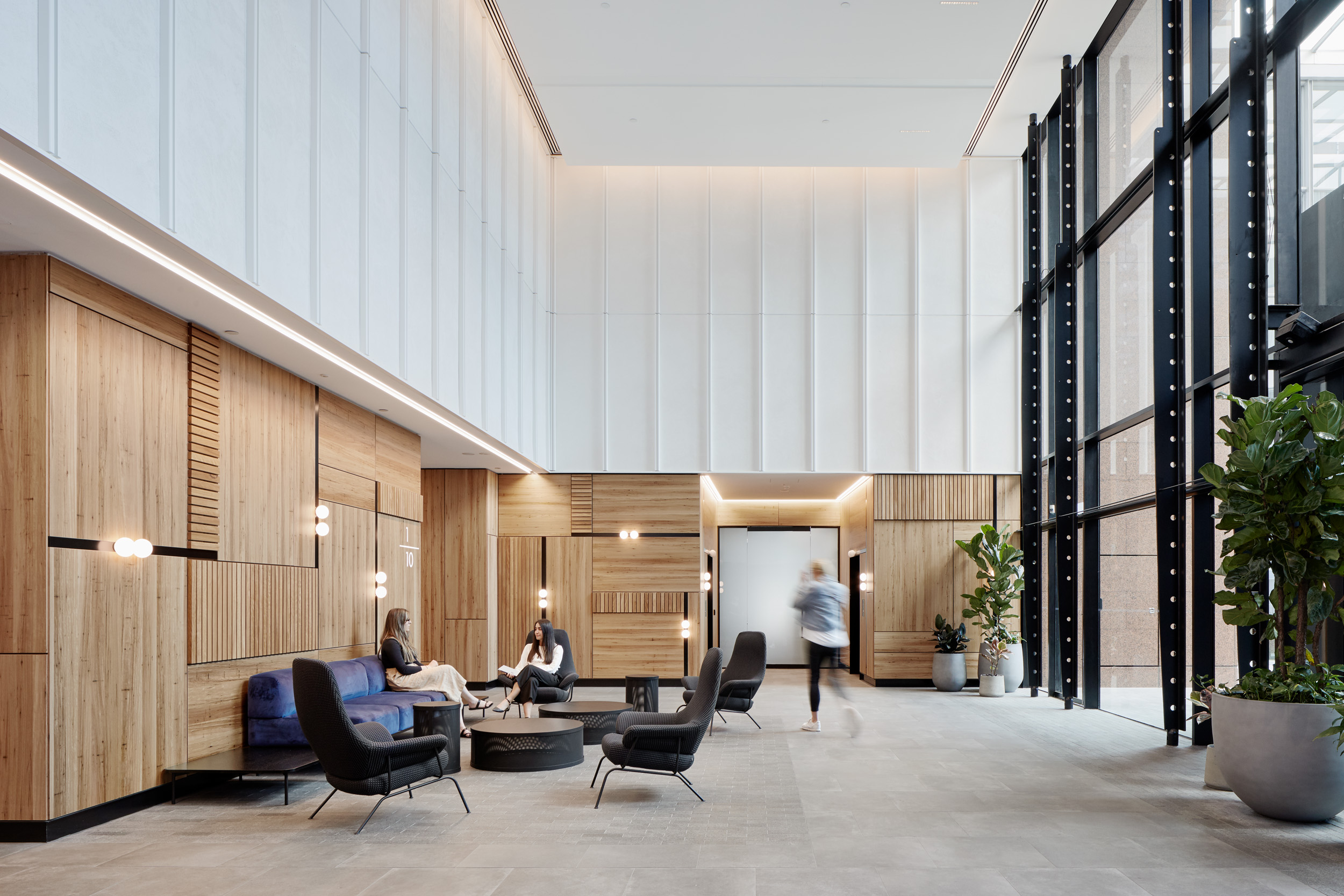Through our continued experience of COVID and the evolving nature of work from home strategies, there is an opportunity to represent the purpose and meaning of the workplace.
Workplace strategy and design have become key drivers in how to assist organisations to negotiate this new era of working, helping re‐engage our cities, and drawing workers back into thriving communities within our office environments.
WMK's significant experience in strategy and workplace design combined with recent exploration & experimentation with tenants and landlords, we acknowledge there is no one size fits all approach. In what is still an ever-changing landscape, no one yet has the final answers to what a post‐COVID workplace experience will look like.
We believe however that spaces that are flexible, adaptable, and reconfigurable are what will allow both landlords and their tenants to adjust & refine their space requirements as they go.
In our "Working in a new era' series, WMK looks at the various issues raised by tenants and landlords and how strategy and design are working to solve them. In this edition, we look at:
- A new arrival experience
- A work island
- Blending the physical & virtual
- Fluid collaboration
A new arrival experience

With the increased frequency and prevalence of proper hand hygiene within the workplace, could this enhanced ritual become the central focus of a new arrival experience? What if this process was front and centre as you entered the workplace, not hidden away? It was these questions that lead us to developing a proposal whereby we explored celebrating this act with a beautiful, well designed vessel to encourage participation ‐ both from staff & guests. More akin to an Aesop store, this new ritual would be an opportunity to enhance the experience of our guests, further promoting a safe and inclusive workplace experience.
How & why we meet is changing given both the rapid & recent adoption of virtual meeting technology. If you can meet remotely, what will draw you back in for an in‐person experience? We may see scenarios whereby face to face meetings focus on the physical and don’t involve digital presentation. Given this potential shift, there will be an increasing focus on how these spaces support safe physical engagement.
As such, we imagined a move towards meeting spaces that don’t require the opening & closing of doors, reducing the need for touch wherever possible. These spaces could be non‐glazed, naturally ventilated and shaped in a way to avoid dead end circulation where tables & walls typically meet. The free movement of air & people will be paramount to both their success and renewed adoption.
Acoustic performance will be managed through the reduction in amplified sound through face to face conversations. Online presentation content could be consumed and discussed in acoustically separate isolation booths elsewhere within the workplace.
A work island

With most of us now practicing social distancing, the idea of back to back workstations and dead‐end circulation between doesn’t inspire confidence as we return to work. As a response to this, we explored creating a series of “work islands”. These objects within the workspace would naturally coordinate both distance and circulation. Teams could be spread around these islands and remain visually connected, albeit physically distanced. Inlet openings at the centre of these islands would allow presentations and stand up huddles to occur safely. It’s this ability to work together again at a safe distance that will ultimately bring our teams back to the physical workplace.
Looking ahead, modules could also be designed to later be pulled apart and reconfigured as social distancing measures relax. A flexible kit of parts approach would further support our adaptable response to this new way of working.
Blending the physical & virtual

Although we see the workplace purpose shifting away from production, we also acknowledge that some returning users will still require space to focus and produce content within the workplace. Coupled with this, many users will still be connecting to virtual meetings, a task that would be challenging within a typical workstation cluster.
Personal space & a degree of privacy will be required to support this new workflow effectively. A modular, furniture system incorporating a personal broadcasting space would allow users to chop & change between the physical and virtual realms with greater ease & privacy. While these systems are already prevalent in the workplace for focused work, the inclusion of a dedicated space to broadcast from would also allow organisations to manage their online brand experience. Panels of this modular system could be interchangeable to adjust the background in addition to providing added acoustic benefit. These new broadcasting pods could also be oriented and clustered to control the user’s approach and provide an enhanced level of privacy & safety.
Fluid collaboration

Standing up and sharing our ideas in person will be of renewed importance as we transition back into face to face experiences. Instead of crowding around a singular wall, we imagine a ceiling suspended system which allows users to safely move through and around the presentation content.
Boards could be on an overhead track and pulled together later when larger, singular expanses of information sharing are suitable. The central, circular table demarcates a 1.5m distance between users and promotes the preferred circulation through the space, removing the anxiety of having to overthink how you move within the space. Allowing gaps between the boards reinforces user safety and suggests multiple ways to enter & exit if distance between users is compromised. More broadly, the introduction of circular forms act as distancing objects within the workscape and help to guide both movement and interaction.
Read more from our Working in a new era series:

